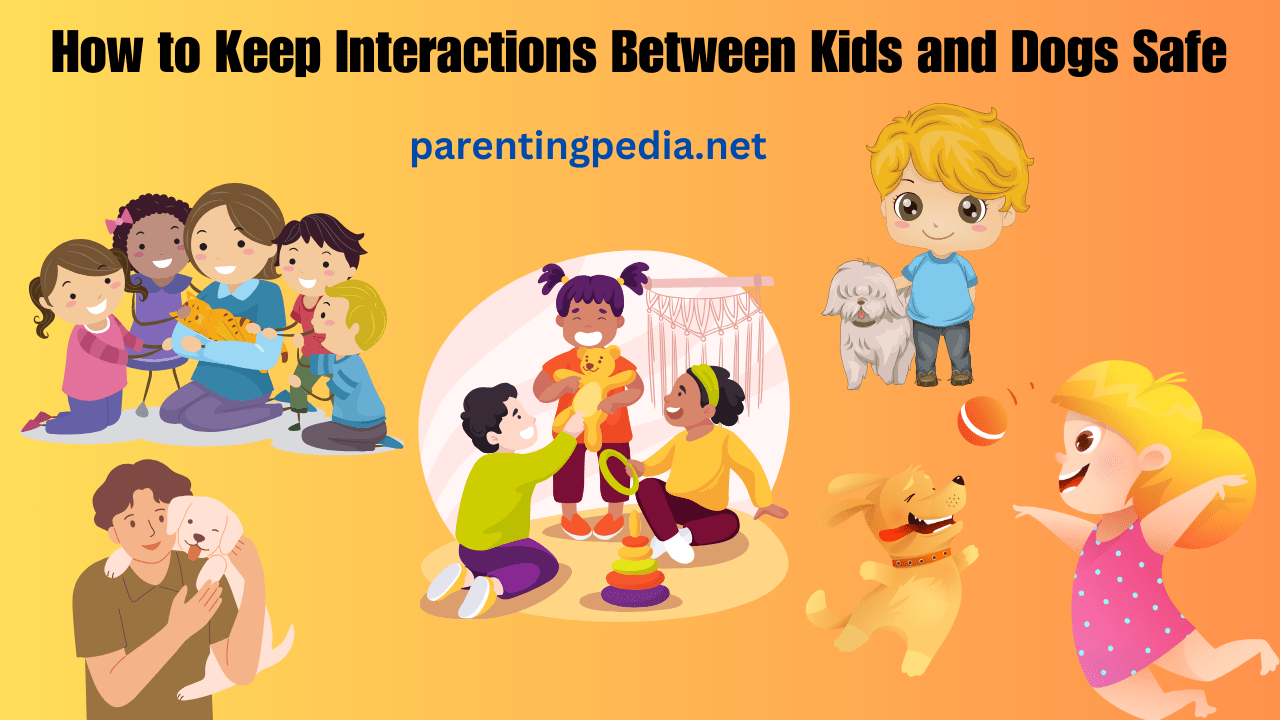Interactions between kids and dogs can be some of the most heartwarming moments in a family’s life. However, they can also be a source of concern if not managed properly.
It’s crucial to ensure that these interactions are safe for both your child and your furry family member.
In this guide, we will explore the essentials of fostering secure and positive interactions between kids and dogs, from teaching your child to interpret canine body language to using effective dog training techniques. Let’s dive in!
Teaching Your Child How to Interact Safely with Dogs
Understanding Canine Body Language
One of the fundamental aspects of ensuring safe interactions between kids and dogs is teaching your child to understand and respect a dog’s body language. Here are some key points to cover:
1. Recognizing a Relaxed Dog
Teach your child that a relaxed dog is a happy dog. Signs of relaxation include a loose body posture, a wagging tail (not stiff), and ears in a natural position. Encourage your child to approach a dog when they see these positive signs.
2. Warning Signs
On the flip side, it’s essential to educate your child about warning signs that indicate a dog may not want interaction. These signs can include growling, baring teeth, raised hackles, or a tucked tail. Make sure your child knows to steer clear if they notice any of these warning signals.
3. Respecting Personal Space
Emphasize the importance of personal space. Teach your child to avoid hugging, kissing, or petting a dog without the dog’s consent. Explain that just like people, dogs have boundaries, and it’s crucial to respect them.
Approaching a Dog Safely
1. Always Ask First
Instill the habit of asking the dog owner for permission before approaching any dog. Even if the dog seems friendly, it’s essential to respect the owner’s judgment.
2. Approach Slowly and Calmly
Teach your child to approach a dog slowly, from the side, rather than head-on. Sudden movements or loud noises can startle a dog, so encourage a calm and gentle approach.
3. Allow the Dog to Sniff Your Hand
Once the owner gives permission, instruct your child to extend their closed hand (with fingers curled in) for the dog to sniff. Dogs often use their sense of smell to assess new people, and this helps them feel more comfortable.
Supervise Interactions Between Kids and Dogs
No matter how well-behaved your dog is, and no matter how much trust you have in them, it’s essential to supervise every interaction between kids and dogs. Here’s why:
- Unpredictable Behavior: Dogs, like any living being, can have unpredictable moments. Even the gentlest dog may react unexpectedly in certain situations.
- Children’s Behavior: Kids, especially young ones, may not always follow the rules or may forget them in the excitement of the moment. They might unintentionally hurt or scare the dog.
- Learning Opportunities: Supervision allows you to guide and teach both your child and your dog during their interactions. You can intervene if necessary to prevent any potential issues.
Dog Training and Obedience
Investing time and effort in your dog’s training is a key component of ensuring safe interactions with your kids. Consider these training tips:
1. Puppy Classes
If you have a new dog, especially a puppy, enrolling them in puppy training classes can be highly beneficial. These classes help your dog learn basic obedience commands and socialize with other dogs and people.
2. Basic Obedience Training
Even if you don’t have a puppy, basic obedience training is crucial. Commands like “sit,” “stay,” and “leave it” can be lifesavers in various situations, including when your dog is interacting with your kids.
3. Positive Reinforcement
When teaching your dog new behaviors, always use positive reinforcement techniques. Reward your dog with treats, praise, and pats when they follow commands or exhibit desirable behavior around kids.
4. Patience is Key
Remember that not all dogs learn at the same pace. Be patient with your dog during the training process, and don’t resort to punishment-based training methods, as they can lead to fear and aggression.
Safety Precautions Around Kids and Dogs
1. Never Leave Kids and Dogs Unsupervised
No matter how well-behaved your dog is, never leave them alone with young children. Accidents can happen in the blink of an eye, and it’s better to be safe than sorry.
2. Use Baby Gates
Baby gates can be a helpful tool to separate your child and your dog when needed. They create physical barriers to prevent unwanted interactions.
3. Teach Children How to Interact
Just as it’s essential to teach your child how to interact with dogs, it’s equally vital to teach your child how not to interact with them. Emphasize that they should never pull a dog’s tail, ears, or fur.
4. Be Cautious Around New Dogs
Approach every new dog with caution, even if they seem friendly. You never know how a dog will react to unfamiliar people, especially children. Always ask for permission before approaching.
5. Manage Excitement
Kids’ energy levels can be contagious, and sometimes, this excitement can overwhelm a dog. Teach your child to recognize when the dog needs space and when it’s best to tone down the excitement.
FAQs: About Keeping Kids and Dogs Safe
Q1. Are some dog breeds safer around kids than others?
A1. While breed tendencies can play a role, a dog’s individual temperament and upbringing matter more. Any breed can be safe around kids with proper training and socialization.
Q2. What should I do if my dog nips or bites my child?
A2. Immediately separate the dog from the child, tend to any injuries, and seek professional help from a dog trainer or behaviorist to address the issue.
Q3. Can kids play with dog toys?
A3. Yes, children can play with dog toys, but it’s essential to monitor them. Some dog toys may not be suitable for young children due to choking hazards.
Q4. When is it safe for children to interact with dogs unsupervised?
A4. There is no fixed age for this, as it depends on your child’s maturity and your dog’s behavior. Gradually increase unsupervised time as both your child and dog demonstrate responsible behavior.
Q5. Is it safe for kids to play tug-of-war with dogs?
A5. Tug-of-war can be safe if played with certain rules and supervision. Teach your child to let go of the toy when the dog releases it and never to tug too forcefully.
Conclusion: Keeping Interactions Between Kids and Dogs Safe
Ensuring safe interactions between kids and dogs requires a combination of education, supervision, and training. By teaching your child to understand canine body language, approach dogs safely, and respect personal space, you can lay a strong foundation for positive interactions. Always supervise interactions, invest in dog training and obedience, and follow safety precautions to create a harmonious environment where your kids and dogs can thrive together. Remember that every dog is unique, so tailor your approach to your specific dog’s personality
Remember, the greatest reward of parenting lies in watching
your children soar with love and confidence.
Till then keep smiling and be happy 😊
Worth Reading 👇
- Finding Balance Becoming a Screen Smart Family
- Best of the web when you’re teen asks for non-alcoholic beer and more
- Choosing the Best Musical Instrument for Children to Learn
- When Life Sucks: A Conversation with Psychiatrist and Comedian Dr. Jo Prendergast
- Getting kids to talk about their feelings
- The case for banning corporal punishment of kids
- How Parents Can Help Kids Make Good Friends
- Why meditation should be taught in schools
- how to be a best and fairest sporting parent from nathan burke
- 10 Tips to Help Your Teen Out of the Procrastination Trap
- Is your child being bullied, how parents can help?
- Taking care of emotions a guide for parents and their kids
- Getting Involved Parents Making a Difference
- How to manage your child’s self-criticism

